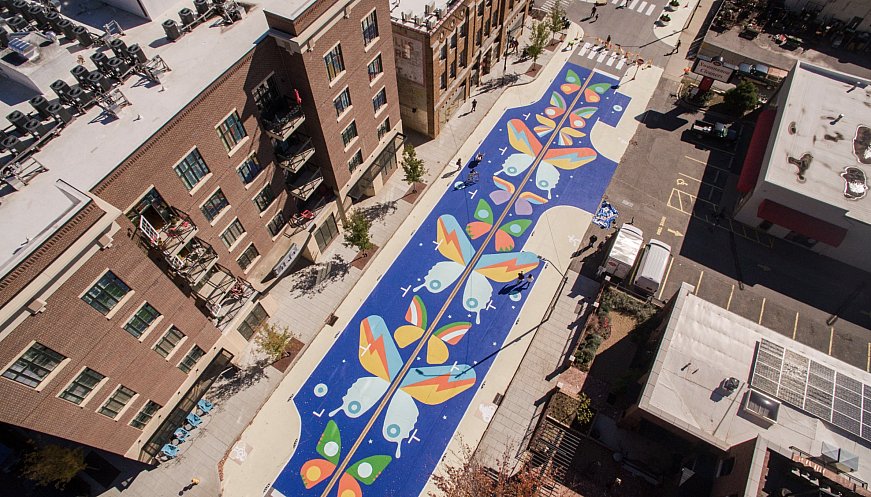 Photo: Justin Mitchell | Asphalt Art Initiative
Photo: Justin Mitchell | Asphalt Art Initiative
The Asphalt Art Initiative provides grants to local residents to create art that makes streets safer. In Chattanooga, Tennessee, artists and residents transformed a high-traffic commercial thoroughfare with a block-long asphalt mural, and students marked safe walking paths with stencils and wheat paste. In Durham, North Carolina, at a high-risk crossing in front of a school, residents created a mosaic and a mural with colorful fish. In Lancaster, California, at a busy five-way intersection, residents shortened the crosswalks, added over 3,000 square feet of new pedestrian space, narrowed car lanes and added a stop sign. Overall, “data showed a 50% drop in crashes involving pedestrians or cyclists and a 37% drop in crashes leading to injuries. Intersections with asphalt art saw a 17% reduction in total accidents.” Dozens of places around the world have used similar art therapy. In Delhi, 20 streets now seem to be cut off by knee-high cement blocks. Ontario has painted potholes in roads to convince drivers to slow down.
More:














